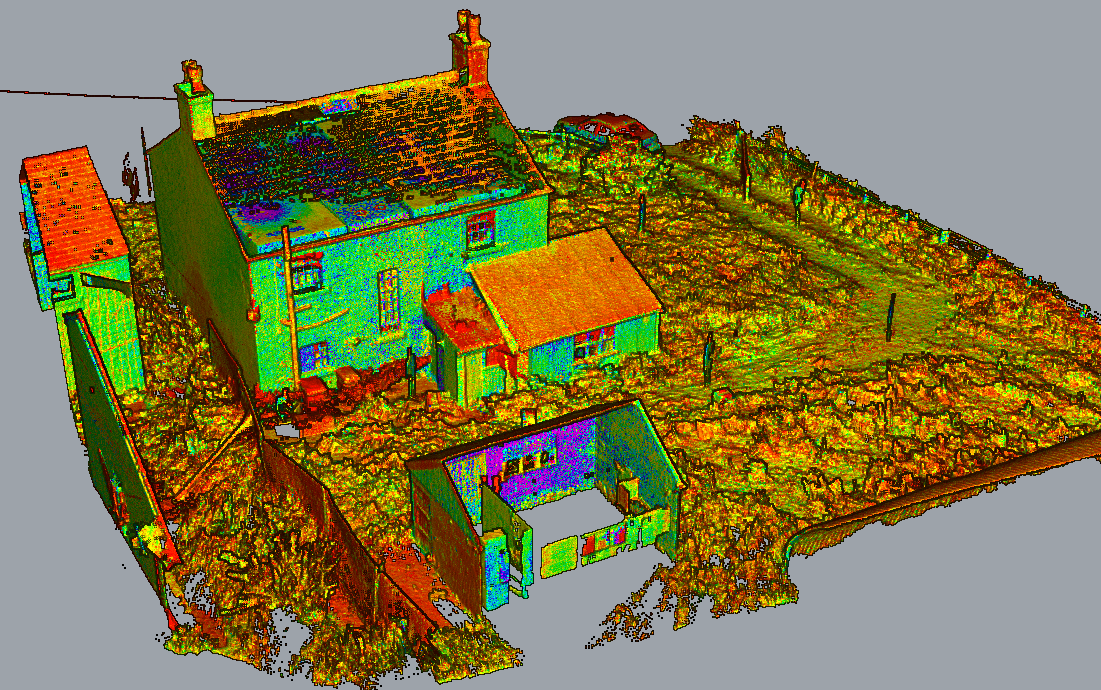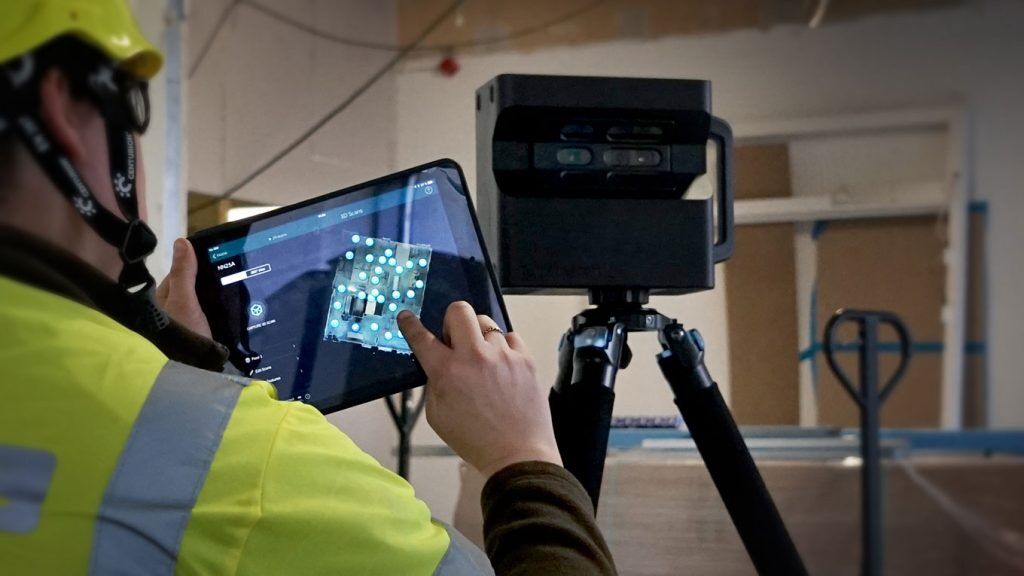Discovering the Applications of 3D Laser Scanning in Archaeology and Cultural Heritage Preservation
The combination of 3D laser scanning technology in archaeology and social heritage preservation marks a substantial development in just how historical websites and artifacts are documented and assessed. This non-invasive technique gives specific spatial information, revealing complex information that were previously challenging to record. As the applications of this technology continue to progress, numerous implications for preservation, documents, and education and learning arise, welcoming further expedition right into its transformative effect on the area.
Recognizing 3D Laser Scanning Technology
3D laser scanning technology has transformed the area of archaeology by supplying detailed and precise spatial data. This advanced technology employs laser beams to capture countless data points from an object or site, producing a very accurate three-dimensional representation (3D Scanning). The resulting point clouds can expose complex information of historical sites, frameworks, and artefacts that could be unseen to the nude eye
Using this modern technology, excavators can record the exact measurements, forms, and settings of objects with unprecedented accuracy. This method minimizes the danger of human mistake and removes the demand for comprehensive manual dimensions. The information gathered can be analyzed and shared conveniently, helping with collaboration amongst scientists. By integrating 3D laser scanning with GIS and various other digital devices, archaeologists boost their ability to envision and translate historic contexts, resulting in much deeper insights right into ancient societies and settings.
Enhancing Archaeological Documents
3D laser scanning significantly boosts archaeological documents through its capability to create precise website maps. This technology assists in detailed artifact evaluation, offering understandings that traditional techniques might forget. On top of that, it ensures the conservation of contextual information, which is necessary for understanding the connections within historical websites.
Exact Site Mapping
While conventional mapping approaches often fight with recording the intricate details of historical sites, advanced laser scanning modern technology supplies an innovative method to precise website mapping. This approach enables archaeologists to create extremely outlined and exact three-dimensional depictions of sites, showcasing topographical variations and structural functions with impressive fidelity. The ability to capture millions of information factors in an issue of mins permits comprehensive documents, which can be conveniently updated and shared amongst scientists. In addition, laser scanning promotes the dimension of complicated geometries that would be difficult to assess making use of traditional tools. Consequently, this modern technology boosts the accuracy of site maps, adding significantly to the preservation and understanding of social heritage sources.
In-depth Artifact Evaluation
Laser scanning modern technology considerably enhances the evaluation of archaeological artifacts, giving researchers with extraordinary information and accuracy. This approach captures intricate surface area textures, measurements, and features that typical paperwork techniques might overlook. By creating high-resolution 3D models, scholars can very closely analyze artefacts without the danger of damage fundamental in physical handling. This precision permits far better comparative researches, making it possible for experts to recognize manufacturing strategies, stylistic variations, and prospective social importance. The capacity to manipulate and picture data in three measurements facilitates a deeper understanding of artefact capability and usage. Generally, laser scanning fosters a much more detailed strategy to archaeological documents, guaranteeing that crucial details concerning artefacts is maintained for future study and education.
Conservation of Contextual Data
Protecting contextual data is necessary for improving archaeological documentation, as it assures that findings are understood within their original environmental and cultural frameworks. 3D laser scanning technology significantly contributes to this preservation initiative by recording thorough spatial partnerships amongst artifacts, structures, and their environments. By generating precise 3D models, excavators can record the specific places and positionings of items in situ, facilitating an extensive understanding of their context. This innovation enables scientists to take another look at and examine sites long after excavation, maintaining the honesty of contextual information. Additionally, electronic records produced through scanning can be shared globally, cultivating collective research and public involvement. Eventually, protecting contextual data via 3D laser scanning enhances historical narratives and advertises a much more profound recognition of cultural heritage.
Conservation of Cultural Heritage Sites
As innovations in modern technology proceed to progress, the preservation of social heritage sites has become significantly reliant on cutting-edge techniques such as 3D laser scanning. This modern technology permits the detailed paperwork of landscapes, frameworks, and artifacts, catching their accurate measurements and spatial relationships in a non-invasive way. By developing high-resolution 3D versions, scientists can monitor and evaluate damage patterns, enabling positive preservation strategies.
Furthermore, 3D laser scanning assists in the sharing of detailed site data with the worldwide area, advertising collaboration among historians, guardians, and archaeologists. These designs function as very useful sources for education and learning and public involvement, elevating recognition of social heritage concerns. The electronic documents produced can secure against loss due to environmental factors, criminal damage, or forget. Generally, 3D laser scanning stands for a transformative method to the preservation of cultural heritage, ensuring that these sites can be researched and valued by future generations.

Restoration and Reconstruction Efforts
The comprehensive documents achieved via 3D laser scanning plays a significant role in remediation and restoration efforts within archaeology. This innovation gives specific dimensions and high-resolution images, enabling precise digital models of structures and artefacts. These versions offer as crucial referrals throughout repair procedures, allowing excavators to imagine the original design and make notified decisions concerning techniques and products required for repair service.
Furthermore, 3D laser scanning helps with the reconstruction of harmed or shed elements by creating thorough reproductions. This procedure aids in making certain that restorations maintain historic integrity while additionally permitting innovative strategies to bring back websites. The ability to analyze wear patterns and architectural weak points with checked data boosts understanding of a site's historic context and its usage gradually. 3D laser scanning not just preserves the physical elements of social heritage but likewise improves the narrative of history, leading future remediation ventures.
Educational and Study Opportunities
The integration of 3D laser scanning in archaeology opens substantial educational and research study possibilities. Academic cooperations can enhance the understanding of ancient sites, while specialized training workshops equip experts with necessary abilities for utilizing this modern technology. Together, these efforts cultivate a richer involvement with archaeological methods and methods.
Academic Collaborations in Archaeology
Collective initiatives in archaeology pop over to these guys have actually come to be increasingly important for progressing both instructional and study opportunities. By fostering partnerships amongst universities, research establishments, and cultural heritage companies, these cooperations facilitate the exchange of knowledge and sources, boosting the top quality of historical researches. Joint jobs commonly take advantage of varied expertise, permitting for complete analyses and innovative methodologies, specifically in the application of modern technologies like 3D laser scanning. Such partnerships likewise promote interdisciplinary strategies, involving fields such as preservation, location, and history science. Furthermore, scholastic partnerships usually cause the development of brand-new curricula and training programs, preparing the following generation of archaeologists to effectively use advanced modern technologies in their work. Eventually, these alliances add to the conservation and understanding of cultural heritage.
Training Workshops for Specialists
Training workshops for experts in archaeology are significantly essential for enhancing abilities in the application of advanced innovations such as 3D laser scanning. These workshops offer individuals with hands-on experience in making use of cutting-edge devices and software application, promoting a deeper understanding of data capture and analysis processes. Experts can discover to develop exact electronic models of archaeological sites, which significantly help in documentation and conservation efforts. In addition, these training sessions commonly include discussions on finest methods and case studies, promoting knowledge exchange amongst individuals. By purchasing continual education and learning, specialists can remain upgraded on progressing innovations, eventually enhancing the efficiency of their research and cultural heritage preservation initiatives. This dedication to ability improvement is crucial for progressing the field of archaeology.
Future Patterns in 3D Laser Scanning for Archaeology
As developments in innovation remain to reshape numerous areas, the future of 3D laser scanning in archaeology guarantees to enhance both the precision and efficiency of website paperwork and analysis. Arising patterns indicate an expanding combination of expert system and artificial intelligence, promoting automated data processing and analysis. This development will certainly enable archaeologists to analyze intricate datasets much more quickly, bring about faster insights right into historical contexts.
The integration of drone innovation with 3D laser scanning is likely to broaden, making it possible for extensive aerial surveys of historical sites that are tough to access. The boosting cost of scanning equipment will equalize access, equipping smaller sized institutions and independent researchers to use these devices effectively. Furthermore, innovations in virtual fact and increased reality will certainly enable immersive experiences for public involvement and education, making archaeological findings much more obtainable and interactive. These patterns collectively indicate a transformative future for archaeology, boosting conservation initiatives and increasing the discipline's outreach.
Frequently Asked Questions
Exactly How Much Does 3D Laser Scanning Devices Expense?

What Are the Limitations of 3D Laser Scanning?
The restrictions of 3D laser scanning consist of high prices, potential data processing difficulties, level of sensitivity to environmental conditions, and problem catching complex information in intricate surfaces, which can impact the accuracy and completeness of scanned representations. (3D Scanning)

Can 3D Laser Scanning Be Utilized Undersea?
Yes, 3D laser scanning can be utilized undersea, but it needs specialized devices and techniques to get rid of challenges such as water distortion and restricted presence. Successful applications have been shown in aquatic archaeology and underwater studies.
The length of time Does a Scanning Job Typically Take?
A scanning task usually takes anywhere from a couple of days to a number of weeks, relying on the complexity and size of browse around this web-site the location being checked, along with the preparation and post-processing needs involved in the job.
Exist Specific Software Application Needs for Handling 3D Scans?
Yes, particular software program requirements for processing 3D scans include programs efficient in handling big point clouds, such as Autodesk Wrap-up, Cyclone, or MeshLab. These devices promote evaluation, visualization, and assimilation right into various applications effectively.
The combination of 3D laser scanning innovation in archaeology and social heritage conservation notes a substantial innovation in just how historic websites and artefacts are recorded and examined. 3D laser scanning innovation has actually changed the area of archaeology by supplying specific and detailed spatial data. As advancements in technology continue to evolve, the preservation of social heritage websites has actually ended up being progressively reliant on innovative methods such as 3D laser scanning. As advancements have a peek at this website in technology continue to improve different fields, the future of 3D laser scanning in archaeology promises to boost both the precision and performance of website paperwork and analysis. The integration of drone modern technology with 3D laser scanning is most likely to broaden, enabling comprehensive airborne studies of archaeological websites that are tough to gain access to.